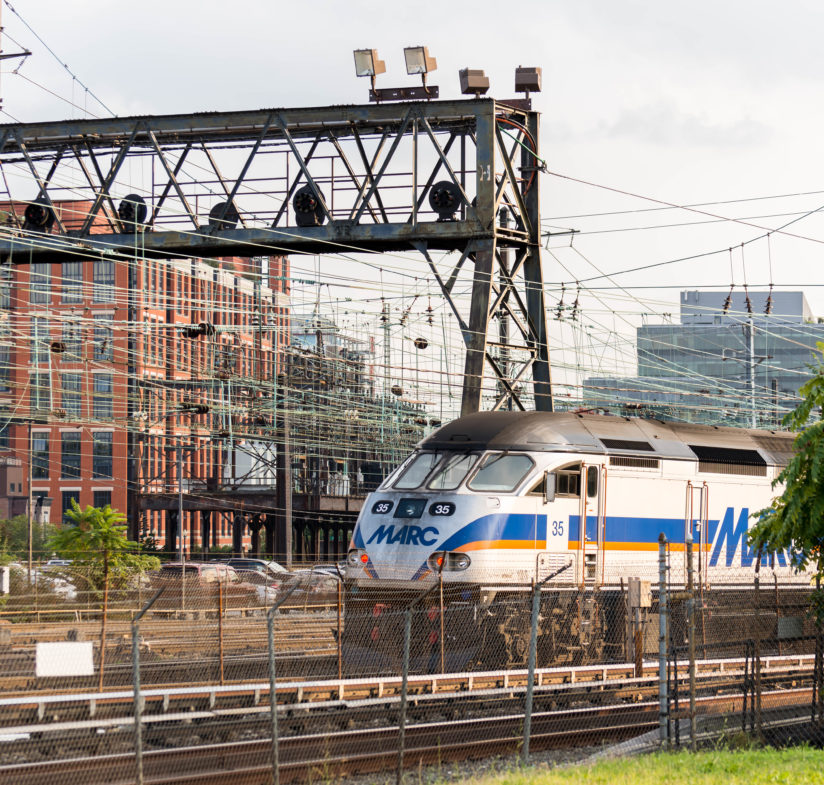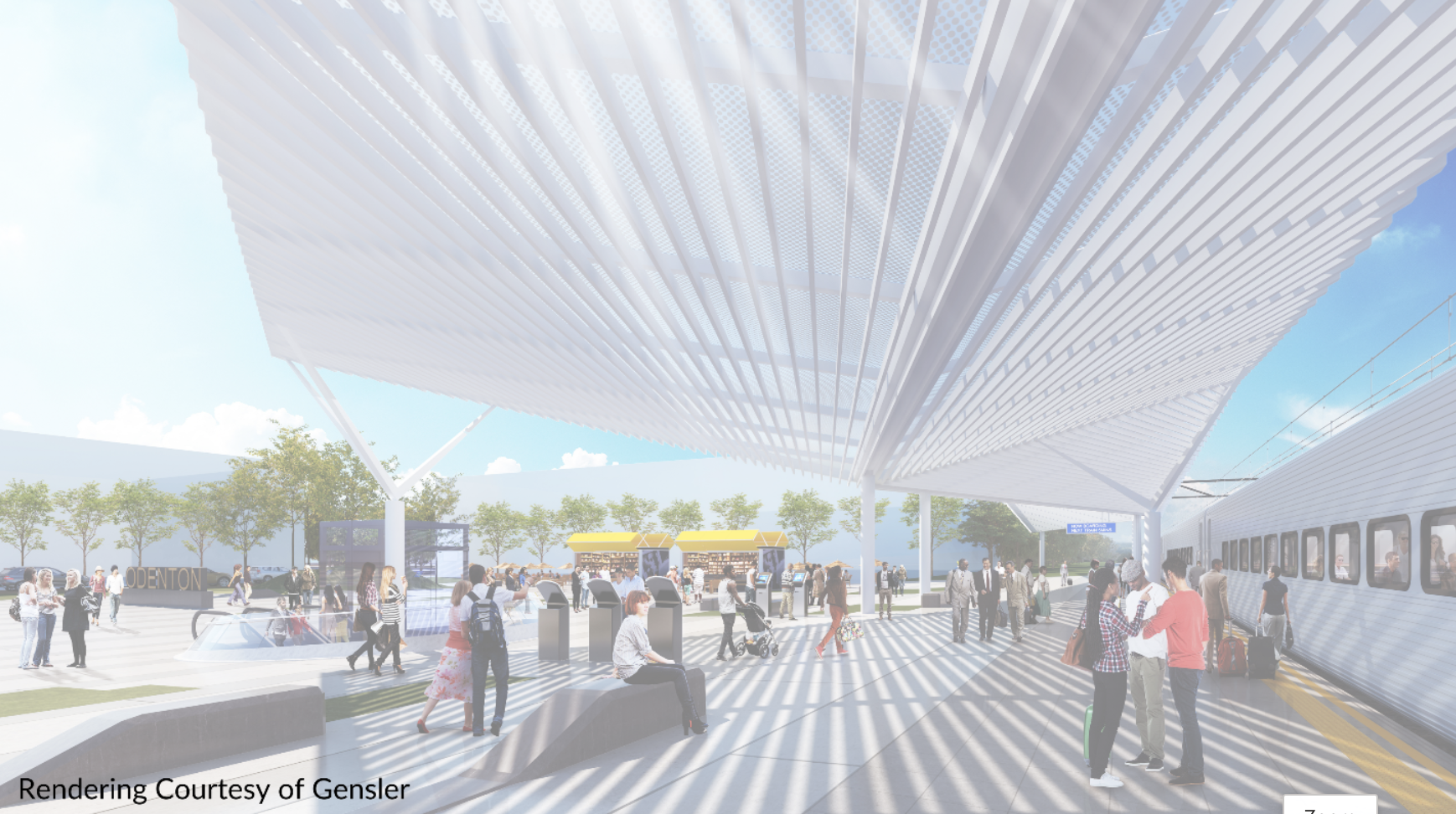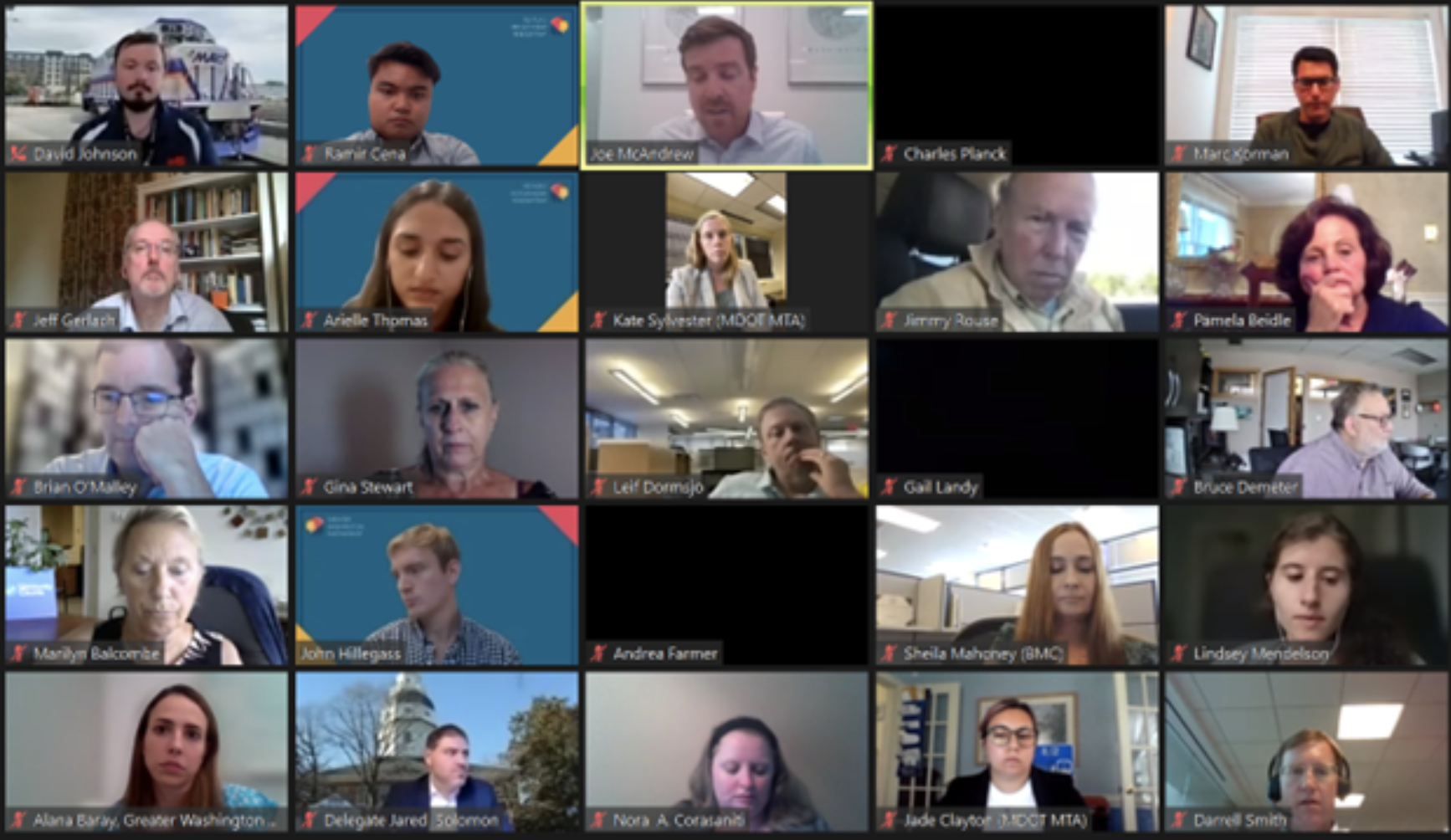
August 1, 2022
The Capital Region from Baltimore to Richmond has a superior regional rail network compared to many domestic peers. However, the opportunity to leverage this asset to spur regional economic competitiveness, build the nation’s most inclusive economy, and open access to more affordable housing options for more families and workers is out of reach because many of our rail assets are far beyond their useful life, and the operations are not organized to meet the travel demand for the region’s families and employers. This is why the Partnership, in collaboration with many of our region’s leaders, created the Capital Region Rail Vision in 2020 and are working with stakeholders to realize the vision over the next 25 years and have made regional rail enhancements a key priority for Baltimore’s Transit Future campaign along with our partners at the Greater Baltimore Committee..
A step in that process occurred on Tuesday, July 26th, when the Partnership co-hosted a virtual roundtable with the Maryland Department of Transportation Maryland Transit Administration (MDOT MTA) and more than 50 stakeholders from throughout the state to review progress MDOT MTA has made advancing legislative mandates around statewide rail plans and expansions and gather feedback from regional stakeholders and representatives from leading employers, chambers of commerce, labor unions, transit rider groups, and regional planning boards.
MDOT MTA Administrator Holly Arnold opened the conversation by noting the historic moment for rail and infrastructure writ-large in Maryland with the passage of the federal bipartisan Infrastructure Jobs & Investment Act (IIJA) and how MDOT MTA is working to advance a statewide regional rail system across Maryland. Maryland State Delegate Jared Solomon followed the Administrator’s opening remarks by sharing the General Assembly’s objective in passage of the 2022 Maryland Regional Rail Transformation Act (SB514 / HB 778) and the 2021 Transit Safety and Expansion Act (SB 199 / HB 114). Joining the roundtable were other notable elected officials that joined Delegate Solomon in supporting the successful regional rail efforts before the General Assembly in recent years, including Senator Malcolm Augustine, Senator Pam Beidle, Delegate Marc Korman, and Delegate Jazz Lewis.
MDOT MTA presented updates on the state’s long-range transit plans, ongoing regional projects, considerations they are monitoring regarding rail expansion, MARC ridership trends as well as updates on key programs from planning for a fourth track at the MARC’s BWI Penn Line Station, storage and maintenance at the Riverside and Martins Yard facilities, design progress for a Penn-Camden connector in Baltimore, and station improvements at Laurel and Odenton MARC stations. However, the bulk of the presentation and subsequent discussions focused on MDOT MTA’s planning efforts to overcome capacity limitations on the Brunswick and Camden Lines to run bidirectional service seven days a week and extend MARC service to Western Maryland, Delaware, and Northern Virginia, to create a truly regional rail system.

After MDOT MTA’s presentation, we divided into small breakout room discussions so MDOT MTA could hear directly from participants on which projects they were most excited about, what opportunities and challenges should the agency keep in mind, who should MARC focus on serving going forward post-pandemic, what would an equitable fare structure look like, and potential alignments for service into Western Maryland. Key themes that emerged from the discussion were:
“MARC may need to serve more people less often.” Telework and hybrid work may have forever changed the ‘traditional’ commute and MARC must think about accommodating schedules of frontline workers, students, sports fans, and weekend recreational and tourism trips by providing more service at non-traditional times such as early mornings, midday, late-nights, and weekends.
Fares must be competitive with local service. Many riders do not consider MARC for local, short-distance trips because they are more expensive, even if the MARC trip is faster, such as from Silver Spring to Union Station in DC or from West Baltimore to Penn Station in Baltimore. Additionally, MDOT MTA should consider expanding fare options by creating 3-day specials, as they do for bus, and explore interoperability with the SmarTrip card.
Coordinate transit and land use planning. Participants noted the importance of transit-oriented development (TOD) as an under-used tool to create transformative projects that can enhance communities while increasing long-term ridership. However, many stations do not have the market that demands such transformative projects on their own so MDOT MTA should act as a catalytic first mover.
Explore new collaborations and partnerships. MDOT MTA must continue to engage elected officials who control the purse strings, but also local chambers, universities (especially HBCUs), faculty and student groups, the Baltimore Metropolitan Council, and should partner with businesses and organizations who are considering moving to Baltimore to collaborate and ensure their workforce is aware of MARC options for living and working from the start.
MARC can better connect Western Maryland to the rest of the state. Whether by expanding workforce opportunities or tourism to Western Maryland, participants were excited by the prospect of new service in Western Maryland. Given limited transit access to/from stations in Western Maryland, parking needs to be a key consideration for stations. However, participants also want MDOT MTA to consider increasing transit access across Maryland, from Ocean City in the east to Oakland in the west.

The Partnership remains inspired by the continued leadership shown from the state’s elected leaders to prioritize and advance regional rail efforts. We also are thankful for the committed staff at MDOT MTA for the opportunity to co-host this webinar for the second year in a row. The virtual roundtable and numerous conversations we have held with stakeholders throughout Maryland and the larger Capital Region demonstrates that we have the team in place to achieve the Regional Rail Vision through sustained collaboration, commitment, and execution. Looking ahead, we will continue to support enhanced rail and transit connections across Maryland and better connections to the rest of the Capital Region to ensure we are building the most inclusive growing economy in the nation.